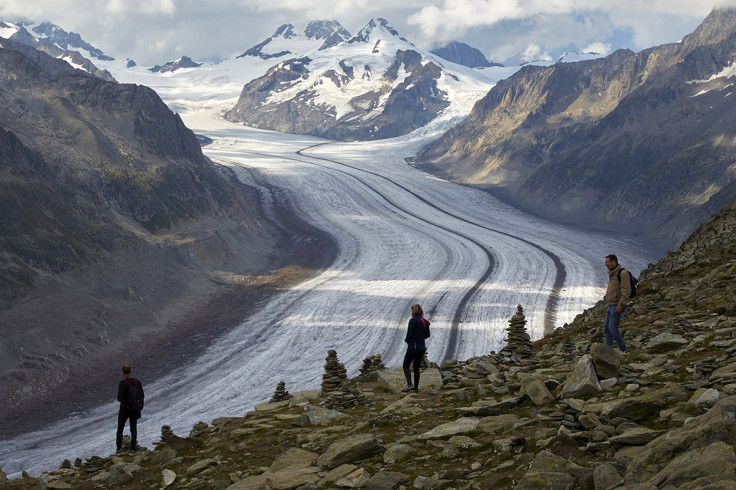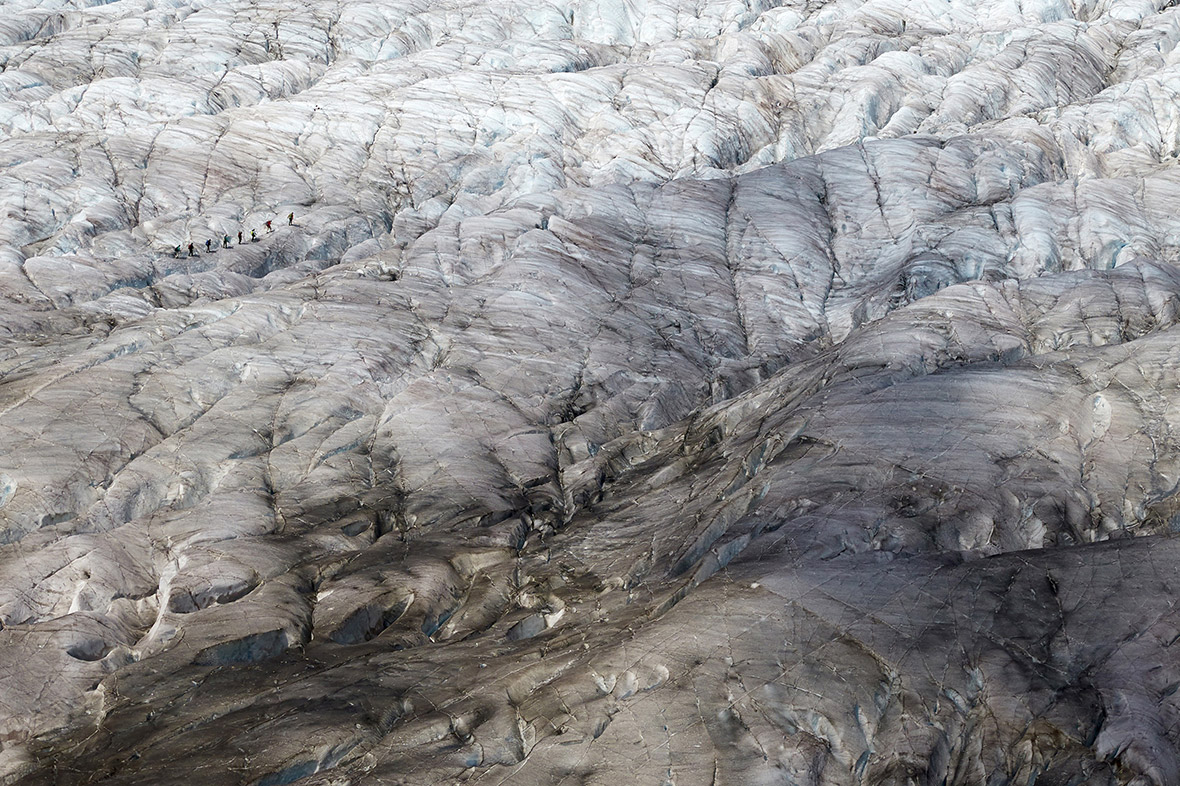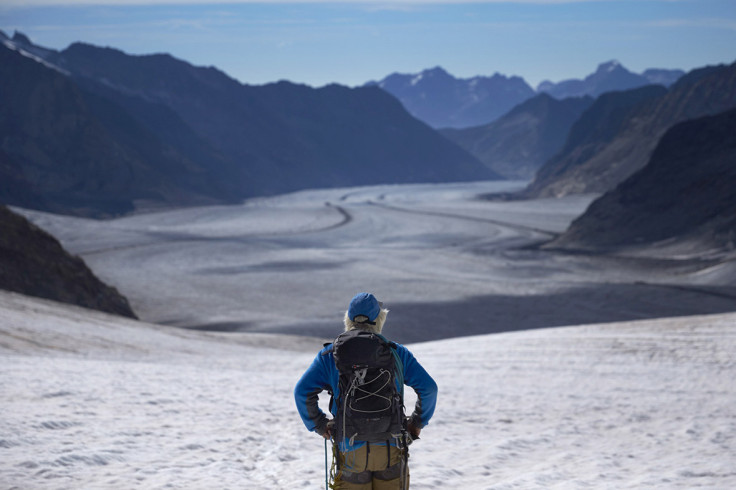Climate change: See Europe's biggest glacier, the Great Aletsch, now, before it's too late [Photos]
Europe's biggest glacier, the Great Aletsch, coils 23km (14m) through the Swiss Alps, but this mighty river of ice could almost vanish in the lifetimes of people born today because of climate change. Although the ice is nearly 1km thick in places, it is melting more quickly than it can be replenished. The glacier has retreated about 3km since 1870 and that pace is quickening. This is feeding more water into the oceans and raising world sea levels.


Reuters photographer Denis Balibouse strapped on a pair of spiked boots to brave the ice and mountain air, despite his fear of heights. "It was only after I got down on to the ice," he says, "that I appreciated the full scale of the glacier. We could walk for an hour and not seem to advance. The vast field of ice snakes its way downhill striped by debris and rocks, scarred by crevasses and hemmed in by towering mountain peaks. Up in the mountains you soon start feeling the lack of air. You have to slow your pace. Take about 30 steps and you're out of breath.


"I was still recovering from a back problem so I found the physical effort hard going. It was also a lot warmer than I thought it would be: seven degrees Celsius in the morning at almost 3,000m," Balibouse said. "After many hours of walking my guide and I were in front of the Konkordia mountain hut. Or rather below it: when the shelter was built in 1877 it was 50m above the glacier. As the glacier has shrunk in size, the hut is now 150m up. A long set of steps had to be built in the 1970s to maintain access. There are 460 steps."




Christian Pletscher, a 60-year-old mountain guide, has seen many changes in the region over the years. Pletscher and his 19-year-old daughter recently stopped off at a refreshment hut near the Col de la Forclaz, a mountain pass close to the French border. "When I was her age, the Trient Glacier was about 500m from the hut," he said. "Now the glacier is a long, long way away. When I look at the glaciers I think of my children. That scares me."

Andreas Vieli, a professor who heads the University of Zurich's group of glaciology experts, says the Aletsch may lose 90% of its ice volume by 2100, with the lower reaches melting away. "My kids are going to see a very different scenery in the Alps," he said.
For glaciers from the Andes to Alaska, rising temperatures mean that a greater volume of ice is lost from the summer melt than the amount replenished by ice formation in wintertime. The Aletsch flows downhill at about 180m a year. The World Glacier Monitoring Service says "the rates of early 21st-century mass loss are without precedent on a global scale".





The United Nations' panel of climate scientists says sea levels are set to rise by between 26 and 82cm by the late 21st century. They have already risen about 20cm since 1900, partly fed by water from melting glaciers. Representatives from almost 200 governments will meet at the UN Climate Conference in Paris from 30 November to 11 December to try to agree ways to curb greenhouse gas emissions.
© Copyright IBTimes 2025. All rights reserved.






















